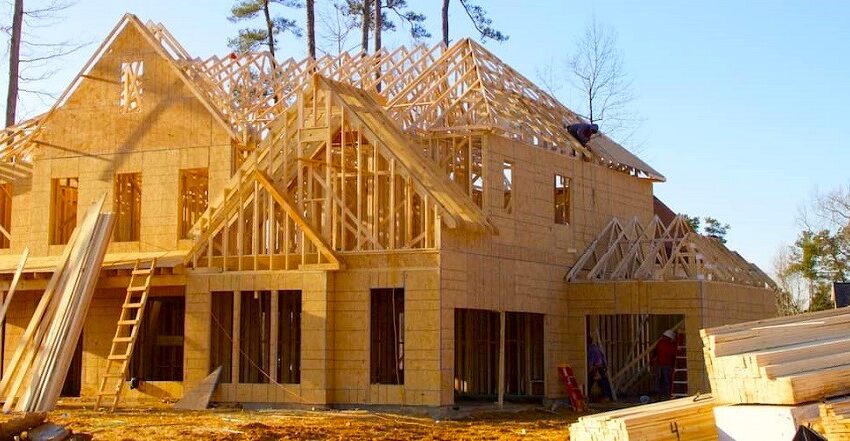Renovating a house is an exciting endeavor allowing homeowners to transform their living spaces and create a home that suits their needs and preferences better. However, undertaking a renovation project while living in the house can present its challenges. It requires careful planning and organization, from managing noise and dust to finding temporary living arrangements. In this article, we will explore effective strategies and practical tips for successfully renovating a house while still residing in it.
Planning Ahead: Creating a Detailed Renovation Plan
Before diving into any renovation project, creating a detailed plan is crucial. Start by assessing your goals and priorities for the renovation. Determine which areas of your house require the most attention and establish a realistic budget. A well-thought-out plan will help you stay organized and keep the renovation on track.

Setting Realistic Expectations: Timeframe and Budget
When renovating a house while living in it, setting realistic expectations regarding the timeframe and budget is important. If you’re considering installing DIY kitchen floating shelves, factor in the extra time and money for this project. Understand that living in a construction zone can be inconvenient, and unexpected delays or expenses may arise. Factor in extra time and money for unforeseen circumstances, and communicate openly with your contractor to manage expectations effectively.
Temporary Living Arrangements: Finding a Suitable Space
Depending on the scope of the renovation, finding temporary living arrangements may be necessary. Consider staying with family or friends, renting a short-term apartment, or utilizing other options like house-sitting. Finding a comfortable and convenient living space during the renovation will alleviate some of the stress and allow you to focus on the project at hand.
Managing the Noise and Dust: Minimizing Disruptions
Noise and dust are inevitable during a renovation project. However, there are steps you can take to minimize their impact on your daily life. Talk to your contractor about implementing dust containment measures and scheduling noisy tasks when out of the house. Investing in noise-canceling headphones and sealing off unaffected areas can also help create a more peaceful living environment.
Prioritizing Rooms: Which Areas to Renovate First
When renovating a house while living in it, it’s essential to prioritize rooms based on their functionality and your family’s needs. Start with high-traffic areas like the kitchen or bathrooms, as these renovations can significantly impact your daily life. By tackling one room at a time, you can maintain a functional living space while the rest of the house undergoes a transformation.
DIY vs. Hiring Professionals: Making the Right Choice
Deciding whether to tackle the renovation as a do-it-yourself (DIY) project or hire professionals is crucial. While DIY can save money, it requires time, skills, and expertise. Assess your capabilities and the complexity of the renovation tasks involved. For complex projects or those requiring permits and specialized skills, it’s often best to hire experienced professionals to ensure high-quality workmanship.
Tips for Renovating the Kitchen: Enhancing Functionality
The kitchen is often the heart of the home, and renovating it can significantly improve its functionality and aesthetic appeal. When renovating your kitchen, consider factors such as layout, storage, and appliances. Optimize the available space, install efficient storage solutions, and choose durable, practical, and visually appealing materials.
Bathroom Renovations: Creating a Relaxing Retreat
Bathroom renovations can provide a luxurious and tranquil space for relaxation. Focus on upgrading fixtures, improving lighting, and enhancing storage options. Incorporate elements that promote relaxation, such as a spa-like shower or a freestanding bathtub. A well-designed bathroom renovation can elevate your daily routine and add value to your home.
Flooring and Painting: Transforming the Look and Feel
Upgrading your flooring and applying a fresh coat of paint can transform your house’s entire look and feel. Choose flooring materials that are durable and easy to maintain while complementing your design style. When selecting paint colors, consider the ambiance you want to create in each room. Lighter shades can make a space appear larger and more open, while darker colors add depth and coziness.
Maximizing Storage: Clever Solutions for Small Spaces
Many houses have limited storage space, which can become even more challenging during a renovation. Take advantage of creative storage solutions to make the most of every inch. Built-in shelves, under-stair storage, and multifunctional furniture can help maximize space and keep your belongings organized. Prioritize decluttering and only keep items that serve a purpose or bring you joy.
Lighting and Electrical Upgrades: Enhancing Ambiance and Safety
Lighting plays a crucial role in creating ambiance and enhancing the functionality of your house. Consider upgrading to energy-efficient lighting fixtures that offer better illumination and consume less electricity. Additionally, assess the electrical systems in your house and consult with a professional to ensure they meet safety standards. Upgrading outlets, switches, and wiring can enhance both safety and convenience.
Landscaping and Outdoor Projects: Extending Your Living Space
Don’t forget to include the outdoor areas of your house in your renovation plans. Enhancing your landscaping and outdoor living spaces can provide additional enjoyment and increase your property’s curb appeal. Consider adding a patio or deck, creating a garden, or installing outdoor lighting. These improvements can turn your backyard into a welcoming oasis for relaxation and entertaining.
Involving the Family: Engaging Kids in the Renovation Process
Getting your family involved in the renovation can make it a more engaging and enjoyable experience. Assign age-appropriate tasks to children, such as painting or organizing. This involvement will teach them valuable skills and create lasting memories. Encourage open communication and involve your family in decision-making to make them feel invested in the renovation journey.
Staying Organized: Maintaining Order during the Renovation
Maintaining organization during a renovation project is essential to avoid chaos and minimize stress. Keep a dedicated renovation binder or folder to store important documents, contracts, and receipts. Create a schedule or timeline to track progress and deadlines. Communicate regularly with your contractor to stay updated on the project’s status. You can effectively manage the renovation while living in your house by staying organized.
Conclusion: Successfully Renovating Your House while Living in It
Renovating a house while living in it is undoubtedly a challenging endeavor. However, you can navigate the process successfully with careful planning, realistic expectations, and effective strategies. Remember to prioritize rooms, consider DIY vs. professional help, and focus on areas that significantly impact your daily life. Engage your family in the renovation process and stay organized to maintain order throughout the project. By following these tips, you can achieve your dream home while minimizing disruptions and maintaining your sanity.
FAQs (Frequently Asked Questions)
1. Is it possible to renovate a house while still living in it?
Yes, it is possible to renovate a house while living in it. However, managing the process effectively requires careful planning, organization, and realistic expectations.
2. Should I hire professionals or do the renovation myself?
The answer depends on the complexity of the renovation tasks and your own skills and capabilities. While DIY can save money, some projects may require professional expertise to ensure high-quality results.
3. How can I minimize disruptions during the renovation?
To minimize disruptions, you can implement measures like dust containment, scheduling noisy tasks strategically, and sealing off unaffected areas. Open communication with your contractor is also crucial for managing disruptions effectively.
4. How do I create temporary living arrangements during the renovation?
Temporary living arrangements can include staying with family or friends, renting a short-term apartment, or exploring house-sitting options. Finding a comfortable and convenient living space that suits your needs is essential.
5. How long does a house renovation typically take?
The duration of a house renovation varies depending on factors such as the scope of work, size of the house, and unforeseen circumstances. Setting realistic expectations and communicating openly with your contractor about the timeline is important.








